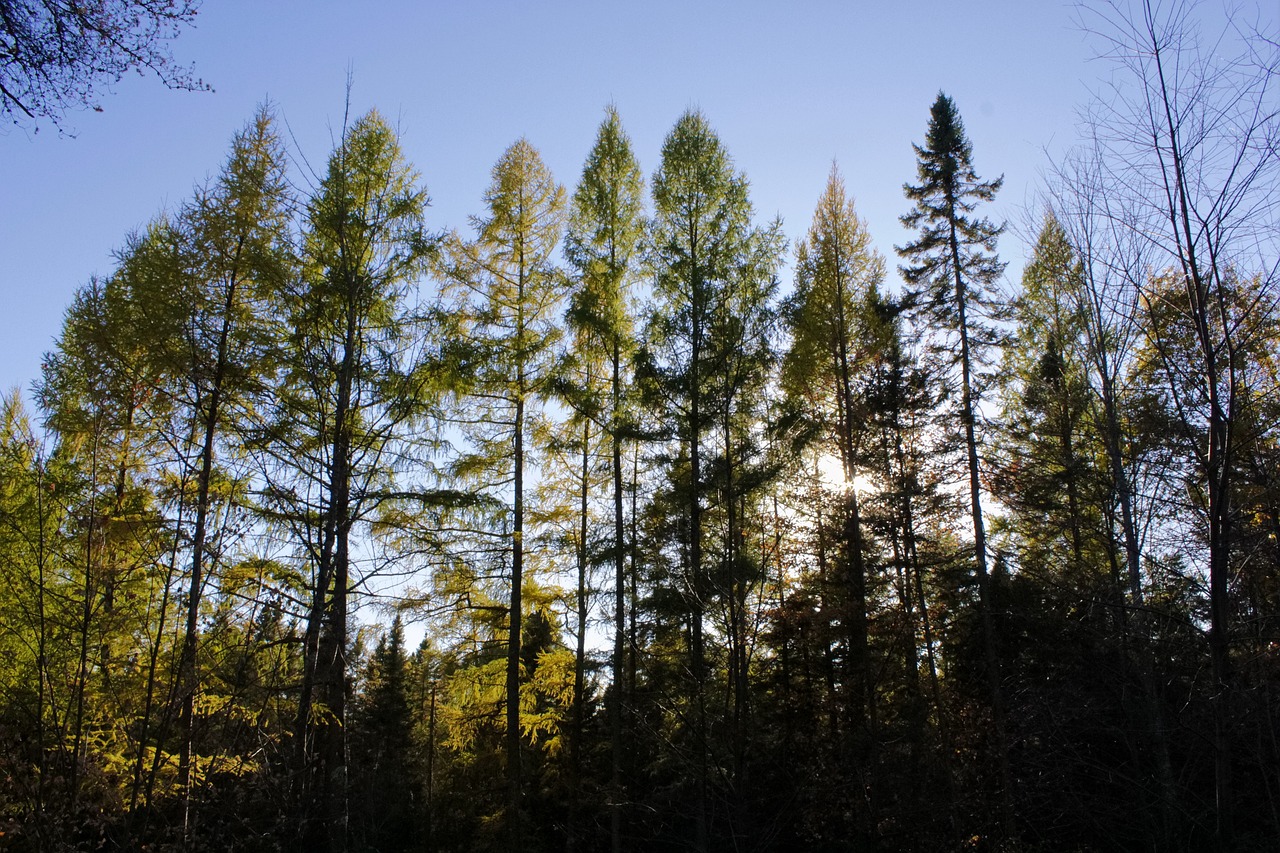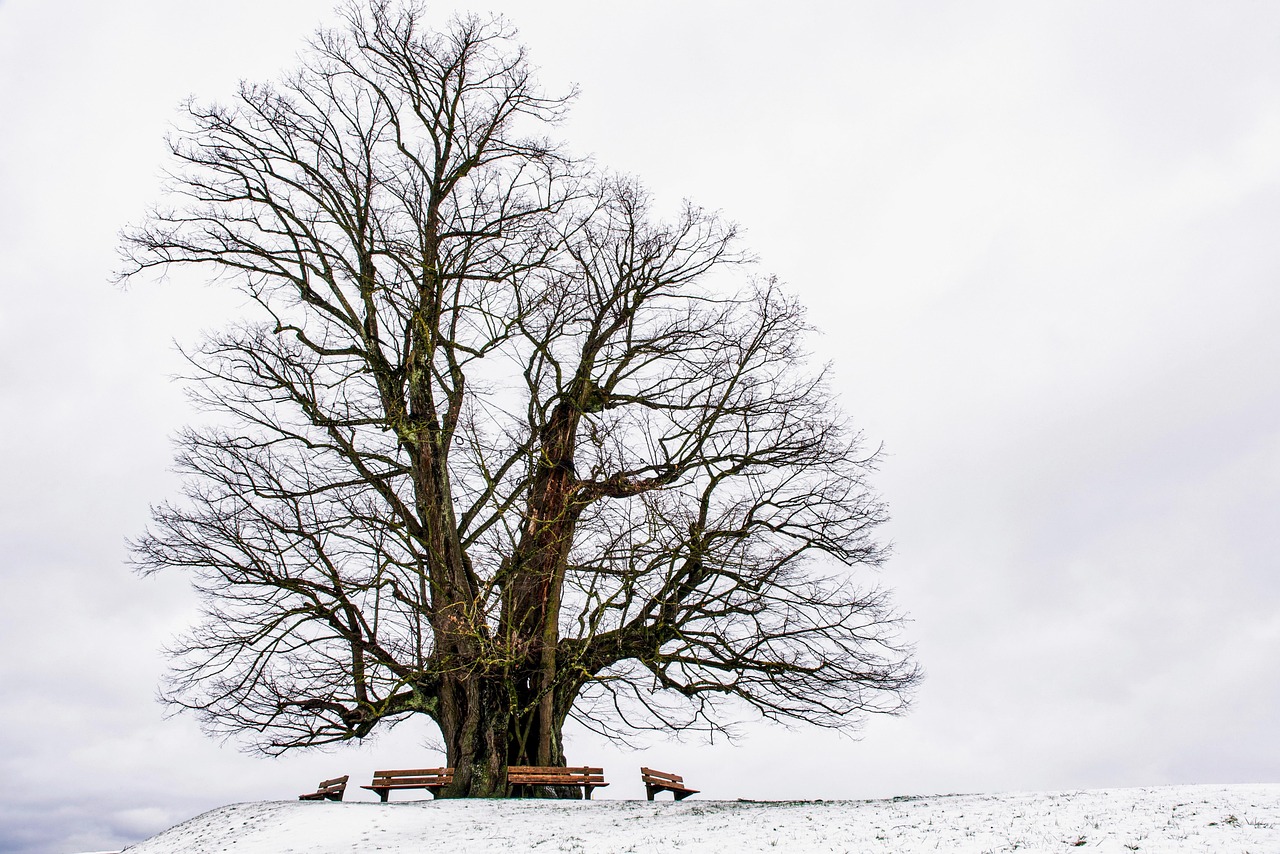The Tamarack tree, also known as Larix laricina, typically exhibits a moderate growth rate in boreal wetlands, averaging between 12 to 24 inches per year under optimal conditions. Its growth can be influenced by various environmental factors, including soil moisture, nutrient availability, and climate conditions.
Understanding Tamarack Trees
Tamarack trees thrive in wetland ecosystems, particularly in the boreal regions of North America. These conifers are unique due to their deciduous nature; they shed their needles each fall, unlike most evergreens. The Tamarack tree plays a crucial role in its ecosystem by providing habitat for various wildlife and contributing to the biodiversity of wetlands.

Growth rates of Tamarack trees can vary significantly based on location and environmental conditions. In boreal wetlands, factors such as water table depth, soil type, and competition from other vegetation influence how quickly these trees can grow. Understanding these dynamics is essential for conservation efforts and forest management in these sensitive ecosystems.
Factors Influencing Growth Rates
Several key factors affect the growth rate of Tamarack trees in boreal wetlands:
- Soil Moisture: Tamaracks prefer consistently moist soils. Excessive water can lead to root rot, while insufficient moisture can stunt growth.
- Nutrient Availability: Nutrient-rich soils promote healthier growth. Tamaracks benefit from soils that contain organic matter.
- Competition: The presence of other tree species and vegetation can impact the growth rate of Tamarack trees. Less competition allows for better sunlight access and nutrient uptake.
- Climate Conditions: Temperature and precipitation patterns play a significant role. Warmer temperatures may enhance growth rates, while drought conditions can limit them.
Growth Stages of the Tamarack Tree
The growth of the Tamarack tree can be categorized into several stages:

- Seedling Stage: Tamaracks begin life as seeds that germinate in moist conditions. This stage lasts for the first few years as the tree establishes itself.
- Juvenile Stage: During this phase, which can last from 5 to 15 years, Tamaracks start to grow more rapidly. They develop a strong root system and begin to reach heights of several feet.
- Mature Stage: After about 20 years, Tamaracks become mature, reaching heights of 40 to 60 feet. Their growth rate stabilizes during this time.
- Old Growth Stage: Tamaracks can live for over 100 years. In this stage, growth slows significantly, but these trees continue to provide ecological benefits.
Growth Rate Variability
The growth rate of Tamarack trees can vary based on specific regional characteristics. For instance, in areas with optimal growing conditions, some Tamaracks have been documented to grow up to 36 inches per year. However, in harsher environments, particularly where water levels fluctuate or nutrient availability is lower, growth may slow considerably.
Here is a table outlining the average growth rates of Tamarack trees based on different environmental conditions:
| Condition | Growth Rate (inches/year) |
|---|---|
| Optimal Moisture & Nutrients | 24-36 |
| Adequate Moisture | 12-24 |
| Low Moisture | 6-12 |
| Drought Conditions | 0-6 |
The variations in growth rates highlight the importance of maintaining healthy wetland ecosystems. Conservation efforts focused on preserving these environments can significantly impact the long-term health and growth rates of Tamarack trees.

In summary, understanding the growth rate of Tamarack trees in boreal wetlands involves considering various ecological factors. By investigating these elements, researchers and conservationists can better appreciate the dynamics at play and work towards sustainable management practices.
Ecological Significance of Tamarack Trees
The Tamarack tree plays a vital role in boreal wetland ecosystems. Its unique characteristics contribute to the overall health of these environments. Understanding the ecological significance of Tamaracks helps to underscore the necessity of their conservation.
Tamaracks provide several benefits to their ecosystems, including:
- Habitat for Wildlife: Tamarack forests serve as crucial habitats for various species, including birds, mammals, and insects. Many animals rely on Tamaracks for shelter and food.
- Soil Stabilization: The extensive root systems of Tamarack trees help to stabilize soils in wetland areas. This reduces erosion and maintains the integrity of the ecosystem.
- Water Regulation: Tamaracks play a key role in regulating water levels in wetlands. Their ability to absorb and store water helps to maintain hydrological balance.
- Carbon Sequestration: Like other trees, Tamaracks sequester carbon dioxide from the atmosphere. This process contributes to climate change mitigation efforts.
Adaptations to Wetland Environments
Tamarack trees have evolved several adaptations that enable them to thrive in wetland conditions. These adaptations are essential for their survival and growth in environments that can be challenging.

Root Structure
The root systems of Tamarack trees are shallow and widespread. This allows them to access waterlogged soils effectively. In addition, their roots can tolerate anaerobic conditions often found in saturated soils. This adaptability is crucial in preventing root rot and ensuring nutrient uptake.
Needle Characteristics
Tamarack needles are unique compared to other conifers. They are soft and flat, which helps reduce water loss through transpiration. This is especially important in environments where moisture levels can fluctuate significantly throughout the year.
Growth Rate Influences: Seasonal Variations
The growth rate of Tamarack trees is not only affected by long-term environmental conditions but also by seasonal variations. Understanding these seasonal impacts can provide insights into how these trees adapt over time.
Spring Growth
In spring, Tamarack trees enter a phase of rapid growth. Warmer temperatures and increased sunlight trigger the production of new shoots and leaves. This period is crucial for setting up the tree’s growth for the entire year.
Summer Growth
During summer, Tamaracks continue to grow but at a slightly reduced rate compared to spring. Adequate moisture during this time is essential for maintaining growth. Hot and dry summers can hinder growth rates significantly.
Autumn Preparation
As autumn approaches, Tamaracks prepare for winter by slowing down their growth. The trees begin to shed their needles, which helps conserve energy and moisture during the cold months. This process is vital for their long-term health, as it allows them to survive harsh winter conditions.
Winter Dormancy
In winter, Tamarack trees enter a dormant state. During this time, their metabolic processes slow down significantly. Dormancy helps them conserve resources until favorable conditions return in spring.
Management Practices for Sustainable Growth
Sustainable management practices are essential for ensuring the health and longevity of Tamarack trees in boreal wetlands. Various strategies can be implemented to promote healthy growth and minimize environmental impacts.
- Monitoring Water Levels: Regularly monitoring water levels in wetland areas can help manage the health of Tamarack populations. Maintaining optimal moisture conditions is crucial for their growth.
- Nutrient Management: Implementing practices that enhance soil nutrient content, such as adding organic matter, can support healthier tree growth.
- Controlling Invasive Species: Invasive plant species can compete with Tamaracks for resources. Effective management strategies should include monitoring and controlling these invasives.
- Selective Harvesting: If timber harvesting is necessary, selective practices can be employed to minimize damage to surrounding trees and maintain forest integrity.
Research and Conservation Efforts
Ongoing research is vital for understanding the dynamics of Tamarack growth rates and their ecological roles in boreal wetlands. Various organizations and institutions are dedicated to studying these trees and implementing conservation strategies.
Key areas of research include:
- Growth Rate Studies: Scientists are examining how different environmental factors influence Tamarack growth rates over time.
- Climate Change Impact: Research focuses on how climate change affects the distribution and health of Tamarack populations across boreal regions.
- Biodiversity Assessments: Studies aim to understand the role of Tamaracks in supporting biodiversity within wetland ecosystems.
Through these efforts, researchers aim to develop effective strategies for conserving Tamarack trees and enhancing their growth in boreal wetlands.
Challenges Facing Tamarack Trees
Despite their ecological significance, Tamarack trees face several challenges that threaten their growth and survival in boreal wetlands. These challenges stem from both natural and anthropogenic factors, necessitating focused research and conservation efforts.
Climate Change
One of the most pressing challenges is climate change. Rising temperatures and shifting precipitation patterns can drastically alter the conditions in which Tamaracks thrive. Some specific impacts include:
- Altered Hydrology: Changes in rainfall and snowmelt patterns can affect water availability in wetlands, potentially leading to drought conditions or flooding.
- Pest and Disease Pressure: Warmer temperatures may expand the range of pests and diseases that affect Tamarack trees, leading to increased mortality rates.
- Shifts in Species Composition: Climate change may favor the growth of other tree species over Tamaracks, leading to increased competition and reduced growth rates.
Invasive Species
Invasive plant species pose another significant threat to Tamarack trees. These non-native species can quickly outcompete native vegetation for resources. Common invasive species that affect Tamarack habitats include:
- Common Buckthorn (Rhamnus cathartica): This shrub can create dense thickets that shade out young Tamaracks, hindering their growth.
- Japanese Knotweed (Fallopia japonica): Known for its aggressive growth, Japanese Knotweed can dominate the landscape and disrupt native plant communities.
- Purple Loosestrife (Lythrum salicaria): This invasive plant thrives in wetland areas and can reduce biodiversity by outcompeting native species.
The Role of Fire in Tamarack Ecosystems
Fire plays a complex role in boreal ecosystems, including those inhabited by Tamarack trees. While Tamaracks are generally fire-adapted due to their ability to regenerate quickly after disturbances, fire frequency and intensity can influence their growth and sustainability.
Benefits of Fire
Fire can have several beneficial effects on Tamarack ecosystems:
- Clearing Competition: Fire removes competing vegetation, allowing Tamaracks to access more sunlight and nutrients.
- Promoting Seed Germination: The heat from fire can create favorable conditions for Tamarack seeds to germinate by reducing competition and preparing the soil.
- Enhancing Nutrient Cycling: Fires release nutrients back into the soil, enriching the environment for future plant growth.
Challenges of Increased Fire Frequency
However, increased fire frequency due to climate change can also pose challenges:
- Loss of Mature Trees: Frequent fires may prevent Tamaracks from reaching maturity, reducing their ability to reproduce effectively.
- Soil Degradation: Intense fires can degrade soil quality and disrupt the delicate balance of nutrients necessary for healthy tree growth.
Tamarack Tree Management Strategies
To address the various challenges facing Tamarack trees, effective management strategies are essential. These strategies encompass both conservation efforts and sustainable practices aimed at promoting healthy growth.
Restoration Projects
Restoration projects aimed at rehabilitating degraded wetland areas can significantly benefit Tamarack populations. These projects may include:
- Replanting Efforts: Planting native Tamarack seedlings in areas where they have been lost due to environmental degradation or human activities.
- Wetland Restoration: Restoring hydrology by creating or enhancing wetlands to improve water retention and availability for Tamarack trees.
Community Involvement
Engaging local communities in conservation efforts can enhance the effectiveness of management strategies. Community involvement may include:
- Educational Programs: Raising awareness about the importance of Tamarack trees and wetland health through workshops and community events.
- Volunteer Initiatives: Organizing volunteer days for planting trees or removing invasive species to foster a sense of stewardship among community members.
Future Research Directions
Future research on Tamarack trees should focus on understanding how these trees respond to changing environmental conditions. Key areas for further study include:
- Genetic Studies: Investigating genetic diversity among Tamarack populations to understand resilience against pests and climate change.
- Long-term Monitoring: Establishing long-term monitoring programs to track growth rates, health status, and ecological interactions over time.
- Sustainable Forestry Practices: Exploring sustainable harvesting methods that minimize impact on Tamarack ecosystems while allowing for economic benefits.
The findings from ongoing and future research will provide valuable insights into conserving Tamarack trees in boreal wetlands. Through a combination of effective management practices and community engagement, it is possible to safeguard these vital ecosystems for future generations.
Importance of Tamarack Conservation
The conservation of Tamarack trees is essential for maintaining the health of boreal wetland ecosystems. These trees not only contribute to biodiversity but also provide crucial ecological services that benefit both the environment and local communities. As such, a multifaceted approach to their conservation is necessary.
Conservation initiatives should focus on:
- Habitat Protection: Safeguarding existing Tamarack habitats from development and degradation is vital. Protected areas can serve as refuges for these trees and the wildlife that depends on them.
- Restoration of Degraded Areas: Efforts to restore areas that have been damaged by human activity or climate change can help re-establish Tamarack populations and their associated ecosystems.
- Monitoring and Research: Continuous research and monitoring programs will help in understanding the long-term health and growth rates of Tamarack trees, informing better management practices.
Collaboration Among Stakeholders
A collaborative approach among various stakeholders is crucial for effective Tamarack conservation. These stakeholders include:
- Government Agencies: Regulatory bodies play a critical role in enforcing environmental protections and establishing conservation policies that benefit Tamarack ecosystems.
- Non-Governmental Organizations (NGOs): NGOs often lead conservation initiatives, providing resources and expertise for habitat restoration projects and community engagement efforts.
- Local Communities: Engaging local communities in conservation efforts fosters a sense of stewardship and responsibility toward the environment. Their participation can enhance the effectiveness of conservation strategies.
- Researchers and Academics: Academic institutions contribute valuable research that aids in understanding Tamarack ecology, informing policy decisions, and developing best practices for sustainable management.
Economic Benefits of Tamarack Ecosystems
In addition to their ecological importance, Tamarack trees also offer economic benefits. Sustainable management of Tamarack forests can yield timber and non-timber products while maintaining ecological integrity. Some economic benefits include:
- Lumber Production: Tamaracks are valued for their durable wood, which is used in construction, furniture making, and other applications. Sustainable harvesting practices can ensure a continuous supply of timber.
- Ecotourism Opportunities: Healthy Tamarack ecosystems attract visitors interested in wildlife viewing, hiking, and photography. Ecotourism can provide significant economic incentives for local communities while promoting conservation.
- Carbon Credits: As carbon sequestration becomes increasingly important, healthy Tamarack forests can be part of carbon credit programs, providing financial benefits while contributing to climate change mitigation.
Future Directions in Conservation Efforts
The future of Tamarack tree conservation lies in adaptive management strategies that respond to ongoing environmental changes. Some promising directions include:
- Climate Resilience Planning: Developing plans that incorporate climate projections to enhance the resilience of Tamarack forests against climate change impacts.
- Community-Based Management: Empowering local communities to take an active role in managing their natural resources fosters a deeper connection to the land and promotes sustainable practices.
- Innovative Research Initiatives: Supporting interdisciplinary research that combines ecology, genetics, and social science can lead to more effective conservation strategies tailored to local conditions.
Final Thoughts
The Tamarack tree plays a vital role in boreal wetland ecosystems, offering numerous ecological and economic benefits. Understanding its growth rate and the factors influencing it is essential for effective conservation efforts. As we face increasing environmental challenges, protecting these trees becomes crucial not only for preserving biodiversity but also for ensuring the sustainability of the ecosystems they inhabit.
Through concerted efforts involving research, community engagement, and sustainable management practices, we can safeguard the future of Tamarack trees. The collaboration of government agencies, NGOs, local communities, and researchers will be instrumental in creating a resilient framework for conservation. By prioritizing the health of these trees and their habitats, we can help maintain the ecological balance needed to support both wildlife and human communities alike.
The journey towards effective Tamarack conservation is ongoing. With continued dedication and innovative approaches, we can enhance the growth rates of these remarkable trees while fostering a healthier environment for generations to come.
